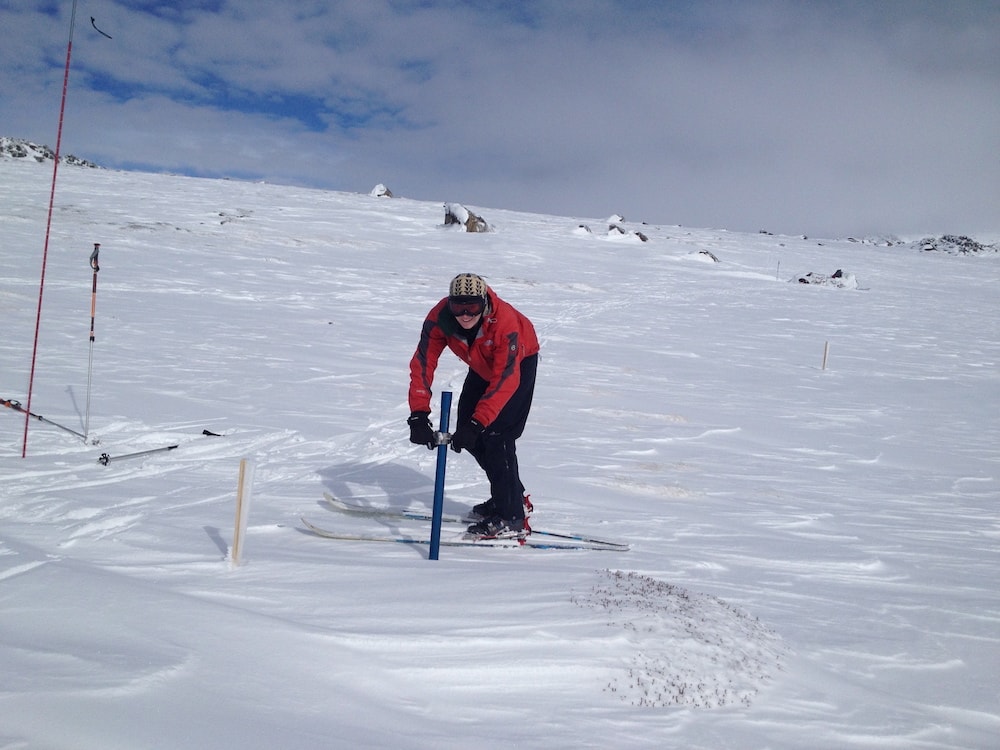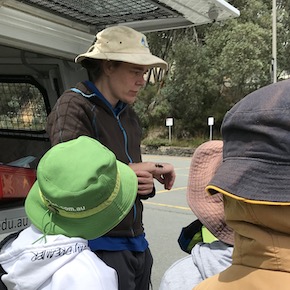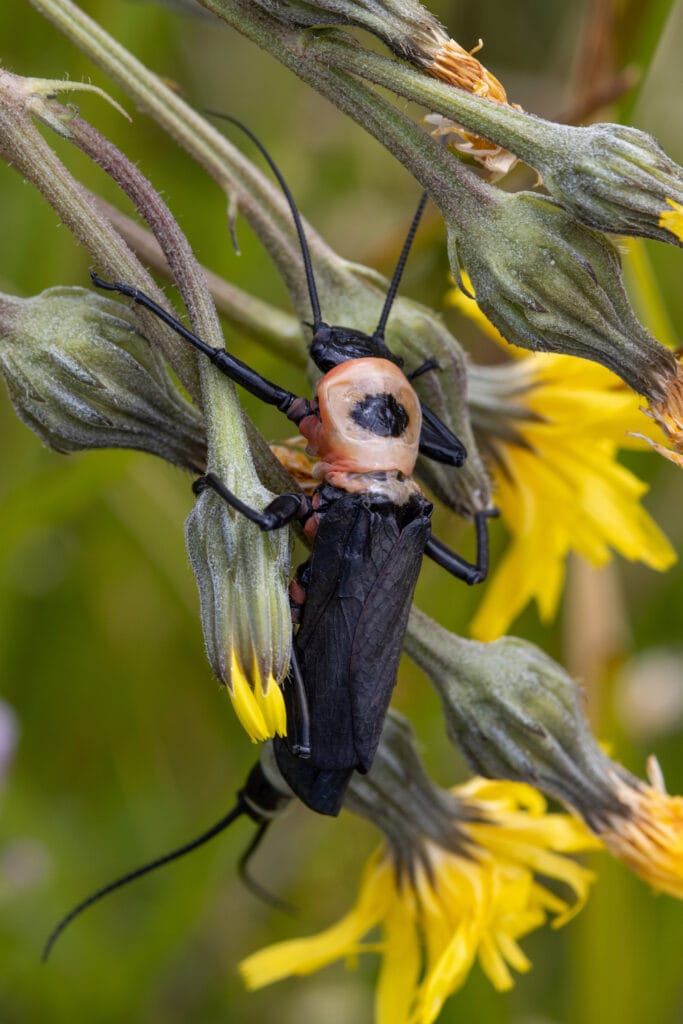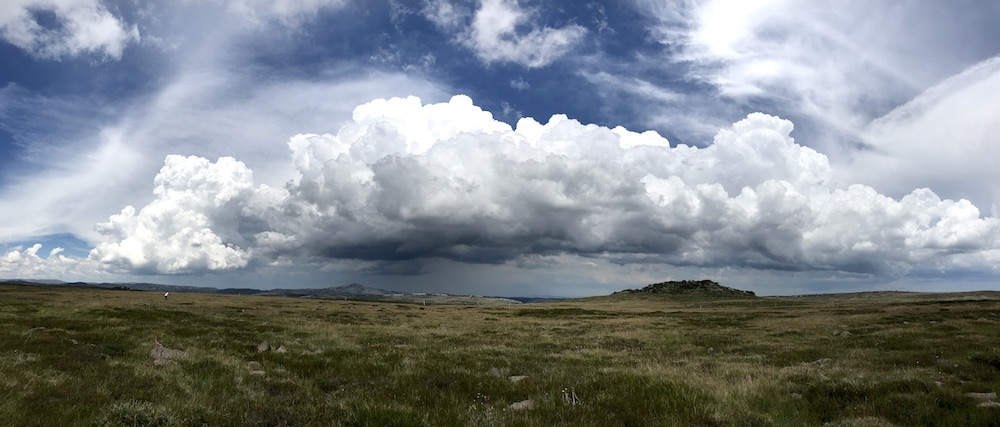In this edition we visit La Trobe University’s Research Centre for Applied Alpine Ecology and shine our spotlight on their research into Australia’s relatively small but socio-economically and ecologically important alpine and sub-alpine ecosystems.
La Trobe University’s Research Centre for Applied Alpine Ecology’s research includes ecological processes, rare and endangered species conservation, effects of fire, exotic plants and animals, human activities, and the management of these ecosystems in response to climate change.
Current members of the Research Centre for Applied Alpine Ecology include staff and research students from across multiple La Trobe University departments and campuses, plus researchers from the University of Melbourne’s School of Biosciences. There are also members from the Australian National University, Charles Darwin University and Deakin University.
While the focus for much of the research is on the Bogong High Plains, one of a few extensive high-altitude landscapes on the Australian mainland, on-going investigations span all of the sub-alpine and alpine regions in Victoria, with research also conducted in Kosciuszko National Park. Some members have decades-long associations with these regions and have studied ecological processes over a range of timescales.
The Director of the Research Centre for Applied Alpine Ecology (RCAAE) is Ewen Silvester, an aquatic biogeochemist with research interests in understanding biogeochemical processes in rivers and wetlands, particularly the patterns and responses of these systems to seasonal changes and climatic events.
What goes on below the snow?
Australia’s snowfields, though relatively small, are important socio-economically and ecologically. However, predictable snowfalls and lasting snowpack are already dwindling, and a predicted decline of 30-70% in annual maximum snow depth relative to 1990 levels by 2050 (under a low-emissions scenario) seems likely.
The ability of the Australian alpine environment to function properly without reliable snowcover and a lasting snowpack is unknown. Studies of snow ecology in Australia are few, and we do not have a good understanding of how, where or when snowpack interacts with vegetation or drives soil water content across the alpine landscape and, in turn, how this affects alpine plant growth in the months following snowmelt.
A new environmental research project funded by the ARC and partners (alpine ski resorts, alpine nurseries, Parks Victoria and the Royal Botanic Gardens in Melbourne) will investigate how Australian alpine ecosystems will fare with declines in snowcover.
“Mountain champions: building resilience into alpine environments for a low-snow future” is led by Dr Susanna Venn and Dr Adam Miller (School of Life and Environmental Sciences, Deakin University), with collaborators at the Australian National University, RMIT University and the Research Centre for Applied Alpine Ecology, La Trobe University.
The Research Group will assess whether alpine species have the regeneration and adaptive capacity to thrive under new climates, as well determining their tolerances to the extreme temperatures they will face in the future.
The research also aims to determine which areas of the alpine landscape are most at-risk of collapse without snow. The project kicks off in 2021 (with post-graduate student and volunteer opportunities) to help better understand “ice ecology” and to map a brighter future for our snow-covered ecosystems.

Dr Susanna Venn and a collaborative team from multiple institutions are investigating how Australian alpine ecosystems will fare with declines in snowcover (Credit: Suzanna Venn)
Conserving Stoneflies - where water meets alpine meets bushfire
Last year La Trobe researchers received funding to investigate the conservation of Victoria’s unique alpine stonefly following the devastating bushfires of 2019-20.
Dr Julia Mynott, Dr Nick Murphy and Professor Nick Bond from the Centre for Freshwater Ecosystems and the Department of Environment, Ecology and Evolution, secured grant funding from the Australian Government’s Wildlife and Habitat Bushfire Recovery program to focus on the impact of the summer bushfires on the stonefly, Thaumatoperla.

La Trobe University researcher Dr Julie Mynott shows an alpine stonefly (Thaumatoperla alpine) to children participating in the Falls Creek Youth Bioblitz (Credit: Naomi Monk)
Dr Mynott said these stoneflies are a unique part of Victoria’s fauna but information on them is limited.
“This project aims to determine the impacts fires have on the species and their current distribution throughout the alpine areas to better protect them from future bushfires.
“This funding is a fantastic opportunity to map these species and provide important information for land managers to identify key areas for their conservation.”
Dr Julia Mynott, La Trobe University
This project will involve collaboration with interested organisations including Parks Victoria, Falls Creek Resort Management and Mt Buller Mt Stirling Resort Management.
The bushfires of 2019-20 directly and indirectly affected many of Victoria’s threatened species. Thaumatoperla is a unique part of Victoria’s alpine fauna, with three species occurring on different mountain areas. Distribution of the species is not well known, limiting understanding of the impacts of fires and restricting the management and recovery options to reduce the risk of population loss and extinction.
The project will use environmental DNA and traditional survey techniques combined with species distribution modelling to assess the Thaumatoperla species. Surveys will be undertaken within the Victorian alpine area – particularly the Bogong High Plains, Mount Buller-Mount Stirling, Yarra Ranges and Mt Baw Baw areas. Partnered with Falls Creek Resort Management, Mount Buller Mount Stirling Resort Management and Parks Victoria.
These data will help to identify priority actions needed to support recovery and conservation of stoneflies.

La Trobe University researchers are investigating the conservation of Victoria’s unique alpine stonefly (Thaumatoperla alpine) following the devastating bushfires of 2019-20 (Credit: Richard Camilleri)







